
Publisher:
Bonnie King
CONTACT:
Newsroom@Salem-news.com
Advertising:
Adsales@Salem-news.com

~Truth~
~Justice~
~Peace~
TJP
Mar-09-2012 14:09

 TweetFollow @OregonNews
TweetFollow @OregonNews
Tim King's interview with Brian Arthur Brown, the author of Three Testaments: Torah, Gospel and Quran.
Salem-News.comRevolutionary new book presents together the texts of the Torah, Gospels, and Qur’an; Scriptures that are central to Jews, Christians and Muslims.
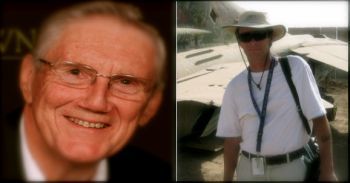 Dr. Brian Arthur Brown and Tim King |
(SALEM / NIAGRA FALLS) - Three Testaments: Torah, Gospel and Quran, a potential publishing phenomenon, is set for release this summer, followed by a seven city book launch tour in September. Tim King interviewed Brian Arthur Brown, the author and editor, from his home in Niagara Falls.
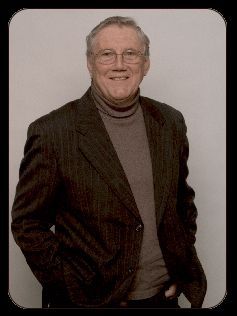 Brian Arthur Brown |
Hello Dr. Brown. This is Tim King, as promised. Are you familiar with the Salem-News service?
Dr. Brown: Yes, of course, mainly through your writer Agron Belica, whose book on the Crucifixion (The Crucifixion: Mistaken Identity?) outshines the songs for which he is perhaps best known – though both are thought provoking. I met Agron at the 2009 Forensic Scriptures conference in New York and he introduced me to your exceptional service.
Tim King: Well, let’s get to the subject of your new book. Is Three Testaments: Torah, Gospel and Quran meant to be a new Bible?
Dr. Brown: Three Testaments does not purport to do anything more than point out that the scriptures sacred to the family of Abraham, Sarah and Hagar are related, telling many of the same stories from differing perspectives, and also supplementing each other, critiquing, confirming and amplifying one another in ways that help today’s members of this family to understand each other better.
Tim King: Who are the contributors to the volume beside yourself?
The Scriptures of Abraham’s Family
Published Together for the First Time Academic text, good read, book club pick, and coffee table statement. Parchment-look cover, evocative artwork, calligraphy, scriptural texts in oversized format. This breakthrough in scholarship meets the need for a spiritual basis of multi-dimensional community life, beginning with mutual respect within in the family of Abraham, Sarah and Hagar. Brian Arthur Brown is the contributing editor of this book with a foreword by Amir Hussain, editor of the Journal of the American Academy of Religion, and essays by several respected Jewish, Christian and Islamic scholars. From Rowman & Littlefield. Scriptures licensed by Jewish Publication Society, Sheed & Ward and Kazi USA. In bookstores at $65.00, available from Amazon at 55.69 and at book launch activities for just $20.00 per copy. Bulk purchases are available for classroom use & for congregational book clubs at special.sales@rowman.com |
Dr. Brown: The volume leads off with a foreword by Amir Hussain, the editor of the Journal of the American Academy of Religion, setting a tone of readable scholarship at about the level of National Geographic. Books I, II and III of this compendium each contain Translators Notes, a Preface and an Introduction to the sacred texts by leading scholars of the three traditions. My role is to offer what violins usually provide for an orchestra, a “continuo” that links various movements.
Tim King: Why did you choose Rowman & Littlefield as publisher?
Dr. Brown: Rowman & Littlefield is one of the few publishers large enough to handle this compendium and they found Three Testaments to be a “compelling” project, while certain other publishers were afraid of it.
Tim King: Why would others be afraid of it?
Dr. Brown: Too hot a topic. You can say anything about sex or politics these days but certain religious issues are still risky. One publisher said there might be riots if they published the Quran with the Bible.
Tim King: What about the Jewish Publication Society, Sheed and Ward or Kazi; did they not find it too hot?
Dr. Brown: JPS and Kazi have been involved supportively since the inception of the project. The Catholic house, Sheed and Ward, took a little convincing, but they are operated by Rowman & Littlefield, who wanted their scriptural text included in what we all see as a landmark publication.
Tim King: One might expect Muslims to object rather strongly to the inclusion of the Quran with the Bible. How do you account for all the Muslim involvement in this text?
Dr. Brown: Some of my Jewish and Christian colleagues wondered if a fatwa might be aimed at me or them. The opposite is the case. Islamic theology teaches that the Quran confirms the truth of previous revelations. There is actually more support for this from Muslims than from others, not less.
Tim King: Is the price of $65.00 a little high for the mass market?
Dr. Brown: The volume is of almost coffee table proportions, with a parchment-look cover, evocative artwork, calligraphy, and scriptural texts, all of which make it complex. Amazon .com is already advertising it for $55.69 and it will sell for $20. during the launch tour in September.
Tim King: Tell us a little about the book launch tour.
Dr. Brown: Five days in New York are followed by two days each in Washington, Dallas, Los Angeles, San Francisco and Chicago, concluding with five days again in Toronto. The main New York event is a rally at Ground Zero, followed by an event at the Canadian Embassy in Washington, and on through high profile venues to finish at the Royal Ontario Museum in Toronto.
Tim King: Best of luck to you and your team in this important venture.
The book's foreword was written by Professor Amir Hussain, Editor of The Journal of the American Academy of Religion and Professor of Theological Studies, Loyola Marymount University, Los Angeles.
Dr. Arthur Brown and Agron Belica
The book that you hold in your hands is revolutionary. It presents together the texts of the Torah, Gospels, and Qur’an, inviting the reader to examine the interdependence of the Scriptures that are central to Jews, Christians and Muslims. That shared presentation in and of itself gives Three Testaments its name and makes it extraordinary. What makes it revolutionary are the connections that Brian Arthur Brown and the other contributors to this volume make between these three great traditions.
In speaking about itself, as it often does, the Qur’an says that those whose knowledge is sound will say that: “We have faith that what is in it is all from God. But only those who have wisdom understand”.1 This book provides both the wisdom and the understanding.
To show the deep connections in our religious history, my mentor, Professor Wilfred Cantwell Smith began one of his books, Towards a World Theology, with the story of Leo Tolstoy, his Confession from 1879, published in 1884. How many readers are familiar with Tolstoy and the story of his “conversion” from a worldly life to a life of ascetic service? The story that converted him was the story of Barlaam (the hermit) and Josaphat (the Indian prince). In the story, the Indian prince, Josaphat, is converted from a life of worldly power to the search for moral and spiritual truths by Barlaam, a Sinai desert monk. Tolstoy learned the story from the Russian Orthodox Church. However, it was not a Russian story, as the Russian Church got it from the Byzantine Church. But it was not a Byzantine story either, as it came to the Byzantine Church from the Muslims. But the story did not originate with Muslims, as Muslims in Central Asia learned it from Manichees. And in the end, finally, it was not a Manichean story, as the Manichees got it from Buddhists. The tale of Barlaam and Josaphat is in fact a story of the Buddha. Bodhisattva becomes “Bodasaf” in Manichee, and “Josaphat” in later tellings of the tale.
However, Wilfred’s genius was not in simply pointing to the history of this story, but to how it moved forward in time. Those who remember Tolstoy know that he was an influence on a young Indian lawyer, Mahatma Gandhi, who founded Tolstoy farm in South Africa in 1910. And those that remember Gandhi know that the story does not end with him. Gandhi was an influence on a young African American minister, the Reverend Martin Luther King, Jr. The story shows that we are connected to each other, both forwards and backwards in time.
We see that connection when we study our Scriptures. Our best scholarly evidence tells us that the Torah was first written down during the Babylonian Exile and in the Return to Jerusalem, as sponsored by Cyrus the Great and his successors. We know that their Zoroastrian tradition, present in Babylon during the Exile, influenced the Bible. In this book, Brian Brown credibly re-establishes the traditional understanding that Jewish monotheism predates that of Zoroaster, despite popular and esoteric predilections placing him thousands of years earlier. Moses, or one of the more contemporary Hebrew prophets, may even have been a source of inspiration for Zoroaster, whose dates we now believe to be early seventh century BCE. At a later time, Zoroastrians may have helped the Jews in their midst to recognize God himself as the only “Redeemer” of Israel.
Brian Brown then shows how possible exposure to Zoroastrianism may have been a revelation to Jesus about his messianic destiny, not only to restore the Davidic kingdom, according to his spiritual understanding of it, but also to be the “Redeemer” or Saviour of the whole world – a distinctly Zoroastrian concept. Finally, Brown presents the Qur’an’s self-understanding as confirming both the Jewish monotheistic heritage and the messiahship of Jesus. He shows the Qur’an to confirm Scriptures in addition to those of the Hebrew and Christian communities (notably Zoroastrian), by employing a traditional Islamic perspective that may be a welcome affirmation for Muslims and helpfully insightful for Jews and Christians in particular.
Ellen Frankel and Marc Brettler present their portrayals of the resolute dedication of Jews to their covenant relationship with God and with each other, as well as certain incongruities in the Torah’s articulation of the monotheistic heritage since at least the time of Moses. Henry Carrigan and David Bruce describe the devotional aspect of the stories of Jesus in Christian tradition and the intricacies associated with the texts of the Christian Scriptures. Laleh Bakhtiar and Nevin Reda bring the cutting edges of both classical and progressive Islamic scholarship to bear on challenges associated with presenting the Qur’an in the context of twenty-first century investigations.
Far from simply ignoring the profound differences among and within religious traditions, Three Testaments is committed to engaging the very differences that we have, to gain a deeper sense of each other’s commitments. This, for me, is the goal of interfaith dialogue as advanced by this book – not that we seek to convert each other, but that we help each other to find what is meaningful in our own traditions.
Christian and Jewish readers will gain better understandings of their own intertwined traditions, and also learn a great deal about Muslims and Islam. Muslims readers will benefit from understanding the Qur’an in its historical and cultural contexts – asking when and why and how the verses were revealed to Muhammad. They can also learn about the truth of metaphor in the discussion of the work of Northrop Frye. Just as an increasing number of Jews and Christians see the truth of the Bible to be in the way it provides meaning for their lives and puts them in touch with the Divine, so Muslims can experience their “truth” in new ways. What once might have been understood as literally true is now seen as metaphorically true, at the deepest level of meaning. The Qur’an seems to give some allowance for such understandings in the first part of the verse quoted earlier: “It is God who has revealed the Book to you. In it are clear revelations which are the foundation of the Book, while others are metaphorical.”2
Important as they are in every community, interfaith relations in North America are affected by the numerical dominance of Christians. With a population of 400 million people in the United States, Mexico and Canada, there are approximately five million Jews, five million Muslims, five million “other” and perhaps ten million now unaffiliated in a sea of 375 million Christians, nominal or active. Several contributors to this book are members, adherents or affiliates of the United Church of Canada, the largest Protestant Church in Canada. Just before Canada’s centennial in 1967, the University of Toronto Press published The Vertical Mosaic, a defining analysis of 100 years of evolving national identity, in which John Porter described the United Church as being “as Canadian as the maple leaf and the beaver.”3 Since then the maple leaf has survived the threat of acid rain, the beaver has adapted to climate change, and the United Church has adjusted to both the changing demographics of immigration and organized religion being tested by a “secular spiritualism” in much of Canadian society. However, Jews and Muslims are not alone in recognizing that the United Church has played a leading role in the fashioning the egalitarian society which makes Canada a much needed model for America and the world in the twenty first century. In this book, eminent American religious scholars join the initiative of Canadian scholars and spiritual leaders in support of this model as exemplified by the contributors associated with the United Church.
At a minimum, we have here a model for a Christianity which can co-exist peacefully and fruitfully with its neighbours. Other Christians, including people who do not know the United Church as well as I do, sometimes mistake its inclusive, gracious and generous ethos for a mere superficial adherence to orthodox Christian belief. Nothing could be further from the truth, so in response to Brian Brown, a Christian faithfully articulating Islamic beliefs, allow me, as a Muslim, to present a creedal summary of United Church beliefs. These are articulated in A New Creed (1994), now used around the world in a number of languages:
Interfaith Panel
Ellen Frankel, Author of Five Books of Miriam, 20 year CEO Jewish Publication Society
Marc Brettler, Professor, Author, How to Read the Bible, Editor, The Oxford Study Bible
Henry Carrigan, Editor, Northwestern University Press, Devotional Writer & Book Critic
David Bruce, Author of Jesus 24/7 and Leading Catholic writer of Resurrection Theology
Laleh Bakhtiar, Translator, The Sublime Quran, Editor of Encyclopedia of Islamic Law
Nevin Reda, WISE Shura Council, Co-ordinator of Muslim Studies, Emmanuel College
Dr. Brown’s Website: http://www.brianarthurbrown.
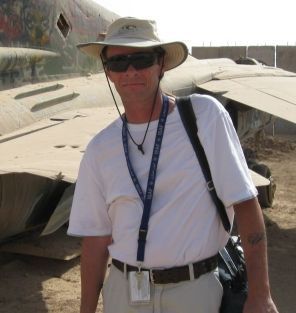 Tim King in 2008, covering the Iraq War |
Tim King has more than twenty years of experience on the west coast as a television news producer, photojournalist, reporter and assignment editor. Tim is Salem-News.com's Executive News Editor. His background includes covering the war in Afghanistan in 2006 and 2007, and reporting from the Iraq war in 2008. Tim is a former U.S. Marine.
Tim holds awards for reporting, photography, writing and editing from The Associated Press the National Coalition of Motorcyclists, the Oregon Confederation of Motorcycle Clubs, Electronic Media Association and The Red Cross In a personal capacity, Tim has written 2,026 articles as of March 2012 for Salem-News.com since the new format designed by Matt Lintz was launched in December, 2005.
Serving readers with news from all over the globe, Tim's life is literally encircled by the endless news flow published by Salem-News.com, where more than 100 writers contribute stories from 20+ countries and regions.
Tim specializes in writing about political and military developments worldwide with an emphasis on Palestine and Sri Lanka, Iraq and Afghanistan, and the U.S. Marines. You can write to Tim at this address: tim@salem-news.com. Visit Tim's Facebook page (facebook.com/TimKing.Reporter)
View articles written by Tim King
 |
 |
 |
 |
 |
Articles for March 8, 2012 | Articles for March 9, 2012 | Articles for March 10, 2012

Quick Links
DINING
Willamette UniversityGoudy Commons Cafe
Dine on the Queen
Willamette Queen Sternwheeler
MUST SEE SALEM
Oregon Capitol ToursCapitol History Gateway
Willamette River Ride
Willamette Queen Sternwheeler
Historic Home Tours:
Deepwood Museum
The Bush House
Gaiety Hollow Garden
AUCTIONS - APPRAISALS
Auction Masters & AppraisalsCONSTRUCTION SERVICES
Roofing and ContractingSheridan, Ore.
ONLINE SHOPPING
Special Occasion DressesAdvertise with Salem-News
Contact:AdSales@Salem-News.com

Salem-News.com:
googlec507860f6901db00.html

Terms of Service | Privacy Policy
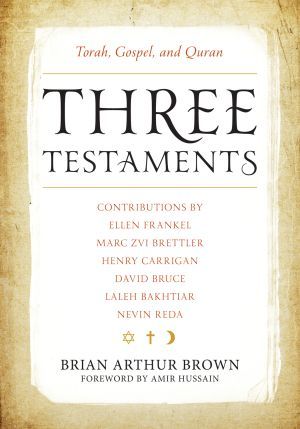
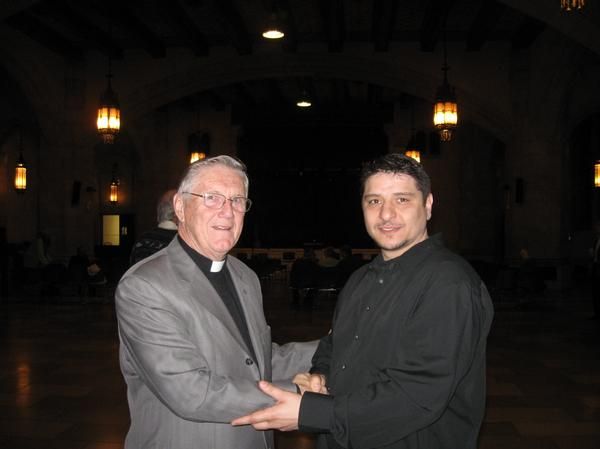
All comments and messages are approved by people and self promotional links or unacceptable comments are denied.
[Return to Top]
©2025 Salem-News.com. All opinions expressed in this article are those of the author and do not necessarily reflect those of Salem-News.com.